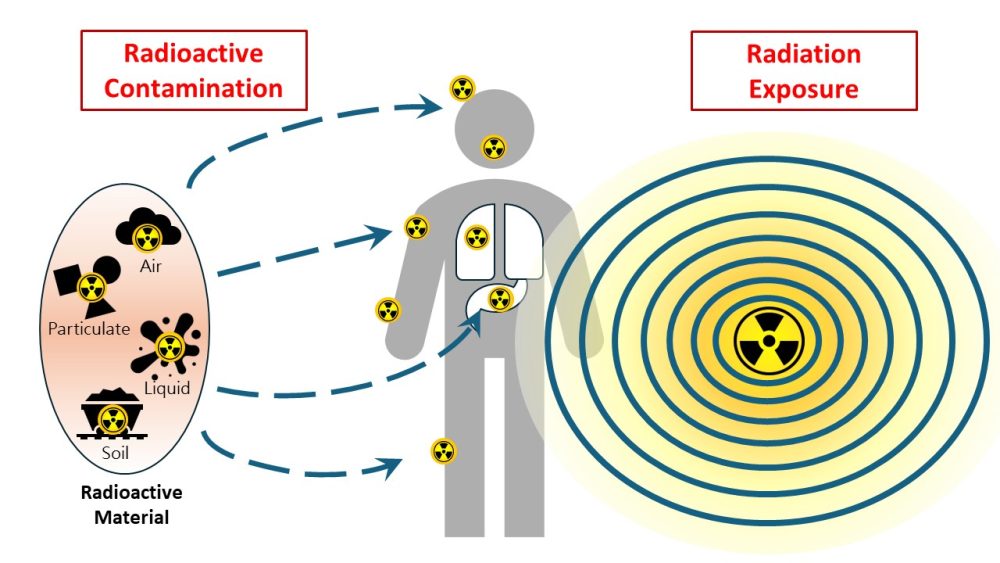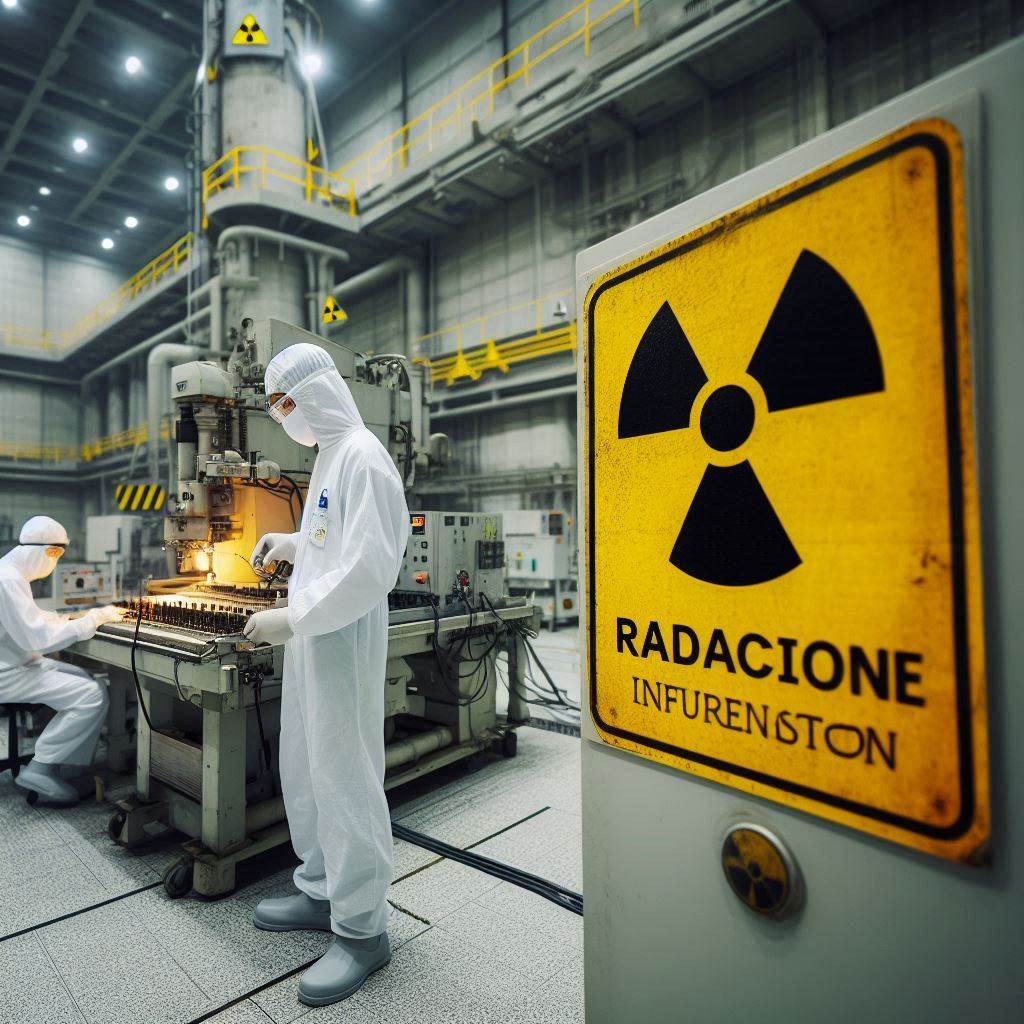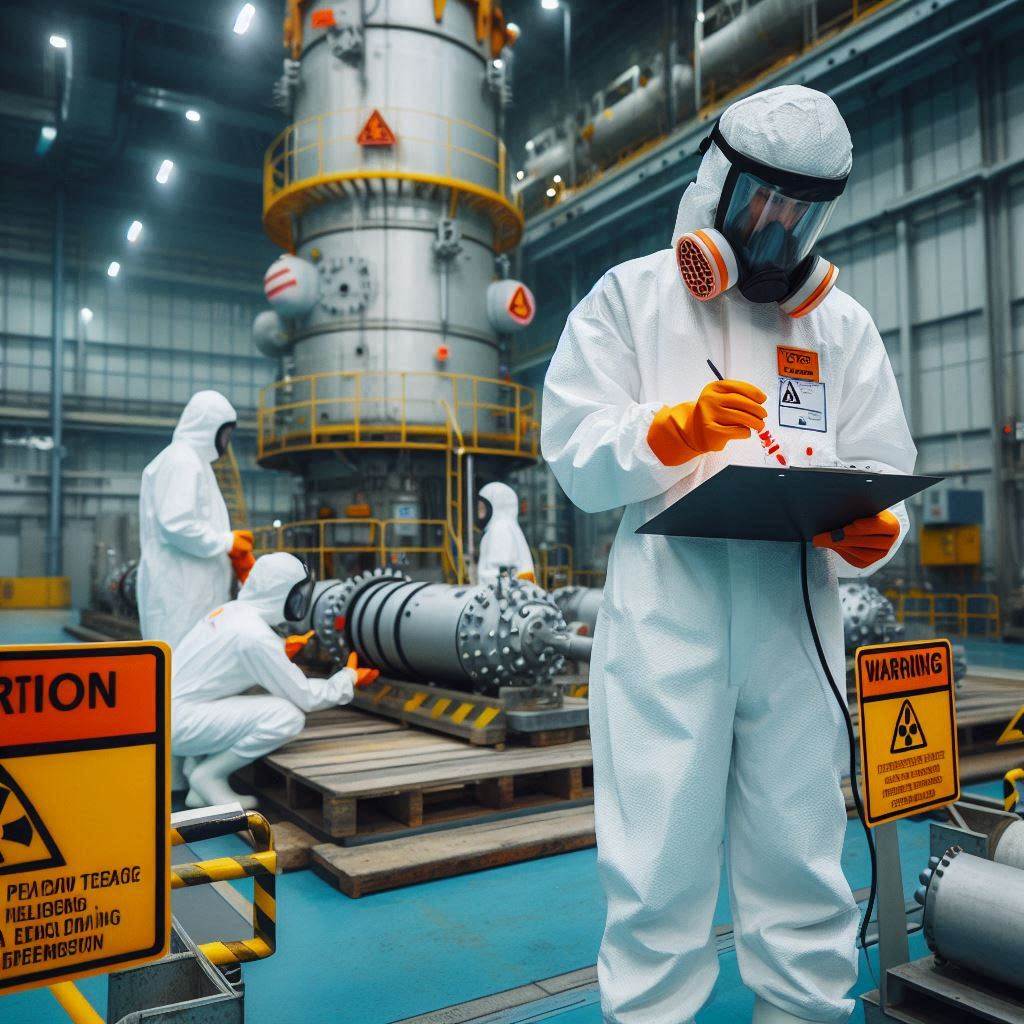Radiation Exposure vs. Radioactive Contamination
When discussing radioactive hazards, two key terms frequently come up: radiation exposure and radioactive contamination. These concepts involve lots of specialized and advanced scientific terms, but they can be understood in simpler ways by considering the energy level and presence of the radioactive material.
All radioactive materials emit ionizing radiation, which can travel through space and materials but loses energy as the distance from the source increases. This radiation can damage living tissues, cells, and DNA. Radiation exposure refers to the scenario where strong energy from radioactive material can harm you even from a long distance. On the other hand, radioactive contamination involves lower-energy radioactive material present in environmental elements. This contamination can come into close contact with, be ingested or inhaled by humans, leading to long-term health effects.

Pic 1: How the radioactive contamination and Radiation exposure effect human body.
Radiation Protection and Safety
There are 3 principles to avoid radiation hazards, Limit Time of Exposure, Increase Distance and Use Shielding. When you work around a radiation source, not only using appropriate protective gears like lead apron, gloves or other shielding material, also need to minimize the working time because the time will influence the dose received. And the intensity of radiation decreases rapidly with distance, maintain a safe distance from radiation source is a necessary consideration.
Compared to knowing about a radiation source nearby, radioactive contamination poses a more serious and significant threat to human health. Contaminated dust or liquid can easily come into contact with clothing or skin without our awareness. They can lead to various illnesses, including cancer and genetic defects. To mitigate these risks, protective clothing plays a vital role in shielding individuals from harmful radiation
Understanding Radioactive Contamination
Where the potential radioactive materials exist in various scenarios, such as medical facilities, nuclear power plants, research institutions, and even in certain industrial processes, protecting individuals from radioactive contamination is very important. Radioactive contamination, unlike many other hazards, is invisible and can have severe long-term effects on health, making it imperative to use effective protective clothing.
Protective clothing is a critical line of defense against radioactive contamination. It is designed to act as a barrier between the wearer and radioactive contaminants, preventing these particles from coming into direct contact with the skin and hair. This barrier can significantly reduce the risk of radioactive contamination and subsequent exposure.
The Standards of Protective Clothing
To protect against radioactive contamination, clothing that complies with EN 1073-2 would be appropriate. EN 1073-2 is a standard specifically designed for protection against radioactive particulate contamination, though it is important to note that it does not offer protection against ionizing radiation itself.
Clothing that meets EN 1073-2 follows the same test methods as Type 5 protective clothing under EN ISO 13982-2, which specify the methods for testing inward leakage of aerosols and solid particles to ensure the clothing provides effective protection. This type of clothing is crucial in environments where there is a risk of exposure to radioactive dust or particles.
Some protective clothing is also designed with antistatic properties to reduce the likelihood of radioactive particles adhering to the fabric. EN 1149-5 is a good standard regarding antistatic. Static electricity can attract dust and particles, reducing this attraction helps in minimizing contamination.

Pic 2: Many kinds of work environment have radioactive contamination risk.
The Importance of Proper Use and Training
While protective clothing is essential, its effectiveness depends largely on correct usage. Protective clothing must be worn and used correctly to ensure it provides the maximum level of protection. Improper use can lead to gaps or breaches, allowing radioactive contamination to penetrate and cause harm.
Proper training is necessary to ensure that individuals understand how to correctly don and remove protective clothing to avoid contamination. Training provides knowledge for frontline works about the risks associated with different types of radioactive hazards. Additionally, regular inspections and maintenance of protective gear are also crucial to ensure that they remain in good condition and provide the intended level of protection.

Pic 3: Proper selection, use, and maintenance are essential for ensuring the worker’s safety.
Conclusion
The role of protective clothing in radioactive environments cannot be overstated. Protective clothing is vital in shielding individuals from the harmful effects of radioactive contamination. It provides a physical barrier that minimizes exposure, thereby reducing the risk of radiation-induced health problems.
Points to emphasize in addition to this, a proper use and training in radioactive protection are essential for ensuring protection, preventing contamination, complying with regulations, reducing health risks, and fostering a safety culture in workplace.
Your safety and the safety of others depend on your alertness and compliance with these safety measures.

